|
Guest post by Elizabeth Little Recipe for Growing Good HumansIn my generation, women were supposed to do it all, do it better than men, and love it. Our anthem was a TV jingle for Enjoli perfume, "I can bring home the bacon, fry it up in the pan, and never let you forget you're a man. 'Cause I'm a woman!" This idea was some bastard child of the women's lib movement but it fit perfectly into the midwestern values my mother taught me; do it all, don't complain. I was thirty years old, on my second husband, second baby, and second iteration of my career. First husbands are a necessary step. First children are the prize for taking that hero's journey. My second husband lived in a beautiful house of large windows, open spaces and mature trees but I still needed to bring home the bacon or there would be nothing to fry up in the pan. That house became the home of my large family day care. My preschool was good but was about to become great. Mrs. Fry came into my life because she needed a school for her grandchildren. She was closing her own successful school to pursue a public speaking career but before going she offered to teach me the secrets of our trade. I leapt at the chance and have been using her simple recipes ever since, not only for teaching, but for human interactions in general. Recipe: Just Go There!(particularly good for difficult transitions)When a parent must a leave a small child with someone else, be it grandparent, Sunday school teacher, babysitter or neighbor, there are often tears and sometimes howling that can go on and on. It is common for the new custodian to try distracting the child with toys or games or promises that "Mommy will come back." There are offers of treats and strained cheerfulness but ultimately both parties end up frustrated. The recipe for a quicker transition? JUST GO THERE! Here is the recipe in action: Child: "I WANT MY Daddy!" Adult: "You want your daddy!" Don't sidestep the issue, show the child you understand! Child: "Whaaaaaah!" Adult: "Wow, you really want your daddy!" By now the child is amazed you listened and understood their position. Usually, the child must cry and scream for hours, and the adult still won't get it. Child: "Yes, I want daddy." Adult: "And he is such a good daddy too." (Really Go There!) Child: "Yes." Ask a question about Daddy to trigger a positive conversation about him, like: "What do you like to do with Daddy?" Child: "He reads me stories." At this point the child is usually getting bored crouched in the corner and talking to you. They start looking around at the toys or snacks or other children. If not, you can talk about the child's family for as long as they like. You can both delight in the wonderfulness of the missing guardian. Sometimes I even ask, "Is Daddy coming back?" Child: "Yes." (Usually said with a pouty bottom lip and a look that says, "Duh!") Adult: "And it will be so great to see him! Shall we draw a picture for him?" You have demonstrated respect for the child's feelings and understanding of their situation. The child now believes you are not stupid and perhaps can be trusted. They will go play. At this point I would usually give a quick call of assurance to the parent who was out in the car crying. I am sure you can see how useful the Just Go There recipe is. When someone is in distress over a trauma often it makes others feel uncomfortable; as if one should avoid talking about it. Most often the traumatized person just wants to tell you about it. All you have to do is go there with them. You don't need to say "the right thing," or give a pep talk or tell your own similar story. Neighbor - "My dog just died." Me - "Oh no!" Neighbor - "Yeah, I had him for 17 years." Me - "That must be so hard. What was his name?" Neighbor - "Duke. He followed me everywhere." Me - "Oh what a good dog. What kind was he?" Neighbor - "A Golden Retriever." Me - "Awww, lovely." See? So easy. (I had a great dog too! But now is NOT the time to share.) I remember one instance when a student ran up to me on the playground and said "Max hit me." "Oh wow," I said, "Did you just want to tell me that?" "Yep!" said the student as he ran off to play. I learned not to assume what the other person wanted or needed. I simply used the Just Go There recipe. Most times nothing else was called for. When-ThenWhen - Then is an easy recipe that can be used in a variety of situations. It always turns out well if you sprinkle it with a little cheerful indifference. It helps if you can be (or pretend to be) unattached to the outcome. It was our routine to always clean up the toys before snack. Sometimes a child would come to the table for snack without putting their toys away. This was a perfect opportunity for When - Then. (Always Make it short, and direct.) "When your toys are cleaned up then you can have snack." Say it nicely and say it once. I would give my attention to the other children and ignore any whining or rolling on the floor. Often the child would put away the toys and come to the snack table. I would say nothing about the incident and offer a snack with attention and kindness. Sometimes a child would not pick up the toys and miss snack. Could this hurt the child? Of course not, lunch was eaten, and teatime was coming. A missing cup of apple sauce would not impact the health of the child, but the experience would. I accepted the child’s choice and simply went on with the routine of the day. There are no "You should have," or "If you had only." The next When - Then is usually taken very seriously. When -Then examples: "When your shoes are on, then we can go to the park." "When you wash your hands, then you may eat dinner." "When you don't take out the trash, then I use your allowance to pay the neighbor kid to do it." "When you can pay for insurance, then you can drive the car." "When you sell my wedding ring for drugs, then I divorce you." So clear. So useful. Chairs Tip: A Great Recipe for Raising Reasonable |
| The wisdom of Elizabeth Little is a unique blend of practical know-how, irreverent humor and a handle on life’s magic. Her deep Midwest roots and stretch of California living have created a woman who understands everything from “Git ‘er done!” to Zen gardening. Mrs. Little has retired from teaching mathematics and currently resides in her Kavanaugh family’s ancestral home in Hamilton Missouri where she runs a small tea shop and writes. |
0 Comments
Guest post by Jessica L. Beck
Leadership Lessons Children Teach Us
After the birth of my son, I found it a huge struggle to return to work, not because I didn’t enjoy my job, but because of the constant juggle between competing priorities. I needed to switch from work-mode immediately to parenting-mode at the end of the day. But are the two roles really that different? As I found my footing as a working parent, I have noticed many parallels between leadership at work and leadership at home.
1. Modeling Good Behavior
After making my fruit-averse toddler strawberry pancakes, from scratch, I was sitting in frustration as I watched him drop every piece to the floor. The toddler-feeding class I took told me not to react. So, I began peeling and biting into an orange. I was about to give in and give my son some breakfast biscuits when he pointed at my orange and said “orange?” and opened his mouth. If it was good enough for me to eat, he certainly wanted to try.
We can preach all day long about our company values, but if you are not alongside your employees performing the behavior you want them to perform, you lose credibility. You may also not understand what you are asking people to do if you are not doing it yourself. Maybe the food is stale but if we are not eating it, how would we know?
We can preach all day long about our company values, but if you are not alongside your employees performing the behavior you want them to perform, you lose credibility. You may also not understand what you are asking people to do if you are not doing it yourself. Maybe the food is stale but if we are not eating it, how would we know?
2. Allowing Failure to Grow
When we see a child struggling to perform a task it can be tempting to swoop in and do it for them so they (and we) can avoid the discomfort. If we can hold back and instead encourage them to do it themselves, they can learn. When my son struggles with his puzzles and starts to get upset, I say, “try again” and often he gets it after a few more tries. Sometimes he puts his hands up and says, “I did it!” and smiles. He would not have this level of joy if he did not accomplish the puzzle himself.
We must also sometimes let go of perfectionism to allow others to learn. My son now puts his clothes in the hamper every night. Sometimes he misses the basket, but I let him keep trying till it makes it in, no matter how tired I may be.
Most employees want stretch assignments. It can be a struggle to trust others, especially if you are a senior leader. We need to help guide and coach but only by trusting and allowing others to try that will they be given the beautiful gift of growth.
We are often scared to learn new things for many reasons. We are sometimes afraid of the new responsibilities that may come with the newfound knowledge, and sometimes that is routed in a fear of failure. As leaders, we must learn to overcome this fear and nurture an environment where the employees are encouraged to grow as well.
We must also sometimes let go of perfectionism to allow others to learn. My son now puts his clothes in the hamper every night. Sometimes he misses the basket, but I let him keep trying till it makes it in, no matter how tired I may be.
Most employees want stretch assignments. It can be a struggle to trust others, especially if you are a senior leader. We need to help guide and coach but only by trusting and allowing others to try that will they be given the beautiful gift of growth.
We are often scared to learn new things for many reasons. We are sometimes afraid of the new responsibilities that may come with the newfound knowledge, and sometimes that is routed in a fear of failure. As leaders, we must learn to overcome this fear and nurture an environment where the employees are encouraged to grow as well.
3. Nurturing Curiosity
Door handles and locks are opening and closing. The microwave beeps after some buttons are pressed. The TV lights up after some attention is paid to a remote control. My toddler is quietly watching all of it. Every day he is figuring things out and learning something new.
Children naturally ask “Why?” to pretty much everything. As parents we will need to explain things we may have never even thought about before. Occasionally in explaining why, we realize things don’t make sense.
The answer “because it has always been that way” will not satisfy a child and will not satisfy an employee either. Praise employees when they ask questions and suggest new solutions. A suggestion may not always be plausible, but if an employee doesn’t feel like their ideas are being listened to and considered, they will stop contributing them.
Children naturally ask “Why?” to pretty much everything. As parents we will need to explain things we may have never even thought about before. Occasionally in explaining why, we realize things don’t make sense.
The answer “because it has always been that way” will not satisfy a child and will not satisfy an employee either. Praise employees when they ask questions and suggest new solutions. A suggestion may not always be plausible, but if an employee doesn’t feel like their ideas are being listened to and considered, they will stop contributing them.
4. Finding Joy
I ask my toddler “where is the ball?” He then runs from place to place in the house looking for it. When he happens upon it, he exclaims “ball!” and picks it up and throws it and laughs wildly! A simple question turned into a joyous quest. Sure, the weight of the world has yet to rest on his shoulders, but if we take a minute to reflect, isn’t there something here that we’ve lost along the way?
We invest so much of ourselves in our professional lives. Believing everything is a crisis will surely cause us to experience burn out. Worse, these perceptions we carry could cause the employees that depend on us for guidance and direction to experience burn out too.
As leaders, we can set the tone within our structure and influence how our employees engage with each other. We can laugh. We can say kind words. We can bring donuts to celebrate a team achievement.
Brazilian writer and singer Paulo Coelho said, “A child can teach an adult three things: to be happy for no reason, to always be curious, and to fight tirelessly for something.” We encourage our children to continue to learn and grow and we should be asking the same of ourselves. What have your kids taught you about being a better leader?
We invest so much of ourselves in our professional lives. Believing everything is a crisis will surely cause us to experience burn out. Worse, these perceptions we carry could cause the employees that depend on us for guidance and direction to experience burn out too.
As leaders, we can set the tone within our structure and influence how our employees engage with each other. We can laugh. We can say kind words. We can bring donuts to celebrate a team achievement.
Brazilian writer and singer Paulo Coelho said, “A child can teach an adult three things: to be happy for no reason, to always be curious, and to fight tirelessly for something.” We encourage our children to continue to learn and grow and we should be asking the same of ourselves. What have your kids taught you about being a better leader?
| Jessica L. Beck is an HR Professional living in Florida with her family. She writes on human resources and lifestyle topics with a passion for process improvement in all areas of life so we can cut the clutter and enjoy life more. Find Jessica’s new book, Be Your Own Career Coach: A Workbook to Navigate Career Change, on Amazon. Read more of her writing here: https://jessicalbeckwriting.my.canva.site/ Contact Information LinkedIn: https://www.linkedin.com/in/jessicacarrarobeck/ Email: [email protected] |
Guest post by Rose Atkinson-Carter
3 Tips for Writing Immersive Story Settings
The world of a story is as important as its characters — in many cases, the setting can even become a character during this journey. Truly immersive stories though, evoke different emotions and feelings and remain firmly lodged in our memory long after reaching the ending.
To help add this depth to your writing, here are three tips for writing immersive story settings.
To help add this depth to your writing, here are three tips for writing immersive story settings.
1. Capture the right setting for your story.
Mountains come and go as easily as train stations when creating worlds on the written page, which is why understanding your ideas with the three levels of story setting in mind is vitally important when creating a fictional world.
Temporal setting is the time and period of your story. Whether contemporary, sci-fi and fantasy, or historical, you must pick a specific time for your writing.
Environmental setting is the location of your story. Are your characters in outer space or the center of the Earth? In small town Hay, Australia, or in a bustling city like London? Not only do we need to know when we are, but also where. Small town’s are as vivid as big cities, and the personality of your story’s world is defined by your use of it.
Individual setting consists of the specific places in your environment. If you’ve written about a small town, is there a supermarket, hairdresser, police station, or pub with locals? Does your big city have train or bus stations in your protagonist’s neighborhood? Your fantasy village lies upon the banks of which river? How are these places important to your story?
Combining these three levels of setting helps create unique landscapes to tell your story.
Temporal setting is the time and period of your story. Whether contemporary, sci-fi and fantasy, or historical, you must pick a specific time for your writing.
Environmental setting is the location of your story. Are your characters in outer space or the center of the Earth? In small town Hay, Australia, or in a bustling city like London? Not only do we need to know when we are, but also where. Small town’s are as vivid as big cities, and the personality of your story’s world is defined by your use of it.
Individual setting consists of the specific places in your environment. If you’ve written about a small town, is there a supermarket, hairdresser, police station, or pub with locals? Does your big city have train or bus stations in your protagonist’s neighborhood? Your fantasy village lies upon the banks of which river? How are these places important to your story?
Combining these three levels of setting helps create unique landscapes to tell your story.
2. Focus on what is unique in your setting.
Are you getting carried away with world-building, crafting endless histories for your world, or having fun researching relevant topics? Remember not to lose focus on what’s unique about your world just because you’re having fun discovering it.
A great way to keep focused is to understand the setting’s relevance within your story. Are the individual places you’ve written about special to your character? Do they have larger meanings in the story world, or are they placeholders towards other scenes? A unique setting should have a unique purpose for your idea. If settings appear irrelevant under scrutiny, flesh them out to improve individuality and relevancy.
A great way to keep focused is to understand the setting’s relevance within your story. Are the individual places you’ve written about special to your character? Do they have larger meanings in the story world, or are they placeholders towards other scenes? A unique setting should have a unique purpose for your idea. If settings appear irrelevant under scrutiny, flesh them out to improve individuality and relevancy.
3. Use senses to draw the reader in.
Just as all good creative writing classes suggest, a well-timed sensory bomb triggers a rush of emotions for the reader. Which not only heightens a scene but also links a story to unlocked memories. Smell, in particular, is a powerful stimulant. A cold ocean brings gooseflesh and the scents of salt and seaweed. Meanwhile, a burnt hand stings and singed hair nauseates, staining our mind with the unpleasant experience. The more you combine sensory experiences in your setting, the more vivid your fictional world becomes to the character and reader. As your character discovers the sights, sounds, smells, and feeling of their world, so should we.
Think of your book as a blank canvas. By the end of the story, your reader should see an engaging world full of life before them, and also feel as if they have experienced the journey which dipping below your book’s cover brings.
Think of your book as a blank canvas. By the end of the story, your reader should see an engaging world full of life before them, and also feel as if they have experienced the journey which dipping below your book’s cover brings.
Rose Atkinson-Carter is a writer with Reedsy, a marketplace and blog that helps authors with everything from preparing for NaNoWriMo to using book templates to format their books.
Guest post by Lynsey Patterson
The Cure for Writers Block
Writer’s block is a term we often hear being thrown around. Is this just a term we have created for times when we struggle to put pen to paper? Is it an excuse that we make when we haven’t even tried? I know months go by when I haven’t sat down to write, and I have heard myself say it’s writer’s block when it is a case of me not having carved out time to write. However, it is true that sometimes when we sit down to write the words do not flow as freely as other times. Here are five different strategies to overcome the dreaded writer’s block.
Shake up your writing routine.
Who says we have to commit to create a regular writing practice? Numerous articles
tell us we have to have a structured writing practice but do we really? Are you a
night owl or an early bird? Grasp those times and use them. Whatever time works for
you. It might be four am in the morning just before the kids wake up or it could be
12pm at night when the whole house is asleep. Rather than creating a practice just
write when it suits you. What works for you might not work for someone else. When
you write is a personal matter.
tell us we have to have a structured writing practice but do we really? Are you a
night owl or an early bird? Grasp those times and use them. Whatever time works for
you. It might be four am in the morning just before the kids wake up or it could be
12pm at night when the whole house is asleep. Rather than creating a practice just
write when it suits you. What works for you might not work for someone else. When
you write is a personal matter.
Enjoy Distractions
Today we have more distractions than ever. Give yourself a certain amount of time to be distracted. It’s ok to spend a bit of time mindlessly scrolling through Instagram reels and Facebook. You might see something that inspires your writing. Who says we shouldn’t be distracted? Sometimes distractions make us think of other ideas. In a world of distractions go with it rather than fighting against it.
Get Physical
How many times do we sit and stare at the screen or a blank page and find that
nothing comes to mind? It’s as if you have never written a word in your life. As Jane
Fonda said, “Let’s get physical.” Getting up and going for a walk stimulates the mind.
Exercise and movement help the brain and create endorphins in the body which can
be helpful for our writing practice.
nothing comes to mind? It’s as if you have never written a word in your life. As Jane
Fonda said, “Let’s get physical.” Getting up and going for a walk stimulates the mind.
Exercise and movement help the brain and create endorphins in the body which can
be helpful for our writing practice.
Change of Scenery
Write somewhere different. Instead of writing at home can you write in your local coffee shop or write outside. Being in nature can be transformative. Is there a local garden that you can find to write in? Maybe writing by the river might inspire words to flow. Being around water can be therapeutic and rousing enough to help your writing. Take yourself out of your usual environment and see how it impacts your writing.
Do something completely different
There is no doubt that there are times when writing can be more difficult than others. During these times you could take a break and do something else. Play chess, play a musical instrument. Do a crossword puzzle. Do the housework or laundry. Anything that directs your attention away from writing. Then you can return to your writing fresh and ready to write. The important thing is to shake up your writing routine. If you keep doing the same thing the results will always be the same. Mix it up and see how your writing improves. Think about what you can do differently to feed your creative mind.
by Arielle Haughee
Five Common Revision Problems and How to Fix Them
Writers often confront similar problems with their stories during the revision process. It can be frustrating to think your manuscript is too messy to fix or has more problems than other writers’ work. Fear not! Many authors confront the same challenges as they revise. Remember, any issue is fixable—some just take more time than others to set straight. So to help save you some time on your journey, here are five common revision problems and ideas for how to fix them.
Problem 1: Info dump
Let’s start with a problem many writers have at the beginning of their stories: filling up those precious first few pages with back story, what is commonly called an “info dump.” This is part of a larger issue: not giving information at the correct time and place to the reader. Either information is given too much, too soon, or too late, confusing the reader and making the story inorganic. Information such as backstory, worldbuilding, or other explanations should be integrated within the plot and given to the reader in small doses as needed to understand the story.
Solution: Story Information Chart
Make a list of information you need to communicate to the reader in order for them to understand the story (not active plot points). This could include things such as the childhood flashback that shows why the character is afraid of water, or for fantasy, how the monetary system works. Turn this list into a table using the example below. Notice a lot of info given in a certain place in your draft? Time to redistribute!
Problem 2: Saggy Middle
This might be the most common problem for writers with their manuscripts. The cause of a drippy, boring middle? Not enough conflict. This slows the pacing. Layering conflict as the story progresses increases the tension and maintains reader interest. Make sure your scenes contain conflict in a variety of forms.
Solution: Brainstorm and Integrate Conflict
There are seven different types of story conflict: battling self, others, society, nature, machine, the supernatural, and fate. Write out a list of the current conflict you have in your story and brainstorm other conflicts that make sense for the character. Do they have crippling self-criticism? (battling self) Do they have to deal with an incredibly judgmental person? (battling others) Does a major storm blow in? (battling nature) Plan where and how you will add the new conflict to the middle of your story.
Problem 3: Character Didn't Change Much
Steve is still the same Steve at the end of the book. He went through this whole saga and didn’t seem to learn or change at all. This one usually sneaks in without the writer realizing it. A critique partner or beta reader may point it out, or upon review, you realize Steve is a bit flat at the end. The root of the problem is an incomplete character arc.
Solution: Character Journey Examination
Write out your character’s learning journey. Start with their initial motivation or goal and which story events impact that motivation. Determine if their goal changed as a result of what happened to them in the story. Then write what the character has learned as a result of the totality of their experiences. How are they different at the end? Integrate this change in mindset in the appropriate places in your story.
Problem 4: POV Unclear or Not Distinct Between Characters
Point of view is the flavor of the narration. A bland flavor, or POV without a distinct voice, is boring for a reader. It can also be confusing when there are multiple POVs in a story and they all sound the same. POV is often something that is developed more during revision, after the writer has spent time going through the story and learning the characters. So don’t beat yourself up if you have this issue with all of your first drafts.
Solution: Put on Character Glasses
Imagine that you have a pair of tinted glasses for each of your POV characters. They are all different colors and each of them represent the lense in which the character experiences the world. Put on those green tinted “Steve” glasses. His green lense is built from all his previous experiences and his attitudes about life. Look around at your setting. How does Steve experience it? Do the bushes remind him of his grandmother’s roses? Now go through a scene with the Steve glasses. Let’s say he’s a very pessimistic person. How does he think and react when the woman bumps into him? Flavor your narration with everything Steve. Then take off the Steve glasses and put on a different pair for the next POV, adding in details specific to that character.
Problem 5: Cluttered Prose
This is the biggest issue that will cause a reader, editor, or agent to put down your book after the first page. Cluttered prose is a red flag showing the reader your book is going to be laborious to read. The brain has to work harder to determine meaning, therefore making the whole experience less enjoyable. Writers often tell critique partners not to worry about the small stuff because they only want feedback on big issues. Well, problems with the “small stuff” is a big issue.
Solution: Cut, Cut, CUT!
Writing crisp prose takes practice and ruthlessness in the revision process. Take out any unnecessary words and go by the Jefferson motto “never use two words when one will do.” Look out for these frequent offenders that clutter up sentences: that, just, very, felt, suddenly, really, began/beginning to, adverbs, and excessive gerunds (-ing words). Go through your manuscript and act like you have to pay a nickel per word to publish your book. See how much money you can save!
These are just a few of the frequent issues writers have during the revision process. What problems often pop up you as you revise?
| Arielle Haughee (Hoy) is a five-time RPLA-winning author and the owner of Orange Blossom Publishing. She is an editor, speaker, and coach. She is the author of The Complete Revision Workbook for Writers, the children’s books Grumbler, Joyride, Pling’s Party, and Sixth Sunday, the editor of the How I Met My Other anthology series, and the creator of the Focus Journal line of journals. She was also honored with the President’s Award from the Florida Writers Association in 2020. She has a serious reading addiction, fantasy romance her absolute favorite, and loves nothing more than good conversation paired with a good wine. She is surrounded by males at home—a husband, two sons, and an energetic dog—and tries to integrate as much purple and flowers in the house as possible. |
Guest post by Iqra Mujeeb
From Mom to Wordsmith:
Embracing a New Chapter as a Writer
Amidst the delightful chaos of motherhood, where every day seemed like a twister of love and laughter, a quite but constant thought began to take shape within me. It was during COVID when I was homeschooling my girls, I realized that I too yearned for a journey of my own. Nurturing my little one’s reading with CVC words through children’s books the idea of transforming from ‘mama’ to ‘writer’ started as a flicker of curiosity. Gradually the idea soon evolved into a blazing desire to explore the
world beyond the realms of potty training and bedtime stories.
As a multi-tasking mom, I knew I had to work on three things to achieve my goals. So, with determination as my driving force, I embarked on a new chapter of self-discovery, one that would demand discipline and challenge me to master the art of time management.
So, if you too are considering embarking on a writing journey, here are three key areas to focus on for a successful start:
world beyond the realms of potty training and bedtime stories.
As a multi-tasking mom, I knew I had to work on three things to achieve my goals. So, with determination as my driving force, I embarked on a new chapter of self-discovery, one that would demand discipline and challenge me to master the art of time management.
So, if you too are considering embarking on a writing journey, here are three key areas to focus on for a successful start:
Stepping out of comfort zone- in to the unknown.
Stepping beyond the confines of familiarity is a pivotal juncture in any creative journey. When I planned on enrolling myself in a self-publishing program, uncertainty clouded my mind. In those moments of doubt, I turned to my confidant-my brother. I poured out my worries and in response he posed a question that struck a chord: “Even if the path doesn’t lead to a published book, wont the experiences
gathered be invaluable lessons?”
His words resonated deeply.
Yes, there will be a fear and doubts while writing your first draft but if we avoid taking that brave step we might end up stuck in what we already know. Growth happens when you step out of your comfort zone. Jump into the unknown, even with just determination as a guide.
gathered be invaluable lessons?”
His words resonated deeply.
Yes, there will be a fear and doubts while writing your first draft but if we avoid taking that brave step we might end up stuck in what we already know. Growth happens when you step out of your comfort zone. Jump into the unknown, even with just determination as a guide.
Discipline
Now here is a thing mama, Discipline is the strongest form of self-love. Discipline leads to habits, habits lead to consistency, and consistency leads to growth. It’s ignoring current pleasure for a bigger reward to come. Now you must be thinking pleasure as a mama? Yes, I am talking about mindless scrolling on your phone or binge-watching Netflix as soon as your child sleeps.
Prioritize your sleep too, meditate, take a walk and keep a notebook nearby to write down any ideas which pops up in your head. Even if you work 15 min towards your goal, I promise you that you will be progressing every day.
There will be days when you won’t feel like it but still get up, get at it even if you are not in mood Excuses are the enemy of discipline. I have been writing this article for a week now, pushing myself to write even when I am exhausted after catering my kids.
Prioritize your sleep too, meditate, take a walk and keep a notebook nearby to write down any ideas which pops up in your head. Even if you work 15 min towards your goal, I promise you that you will be progressing every day.
There will be days when you won’t feel like it but still get up, get at it even if you are not in mood Excuses are the enemy of discipline. I have been writing this article for a week now, pushing myself to write even when I am exhausted after catering my kids.
Time Management
Time is your most precious resource and managing it effectively is the key to success.
First decide what you want to accomplish and set a time for it like 25 minutes every day I am going to dedicate this time period for my writing.
Plan your day! your children should have a routine and try sticking to their schedule, homework time, play time, reading time, screen time, bedtime and we all know we can get things done peacefully when they are on their iPad or sleeping. If they don’t have schedule, it will be hard for you to bring discipline in your writing as the timings of their activities will be different every day.
And one last thing mama! Don’t take on too much on your plate. Set achievable goals, you already are a superhero, and you don’t have to prove something to yourself to the world.
First decide what you want to accomplish and set a time for it like 25 minutes every day I am going to dedicate this time period for my writing.
Plan your day! your children should have a routine and try sticking to their schedule, homework time, play time, reading time, screen time, bedtime and we all know we can get things done peacefully when they are on their iPad or sleeping. If they don’t have schedule, it will be hard for you to bring discipline in your writing as the timings of their activities will be different every day.
And one last thing mama! Don’t take on too much on your plate. Set achievable goals, you already are a superhero, and you don’t have to prove something to yourself to the world.
| Iqra Mujeeb is an Author and Early Childhood Educator who received her certification from Gulf Montessori Center, Dubai. She currently lives in Karachi, Pakistan with her two beautiful daughters and published her first children's picture book in July 2023. She is always on the hunt for good restaurants, parks, and good books, and also has a passion for baking. Instagram: iqra.writer30 |
by Arielle Haughee
The Seven Types of Narrative Conflict
Conflict is the backbone of storytelling. Without it, a story is a lukewarm word puddle. And you don’t just need some of it, you need a lot to have a compelling tale. So what is conflict and how do we pile it into our narratives? Conflict is the struggle between opposing forces. It can be internal or external, and it’s important to have both in your stories.
The key to increasing tension as your story progresses is to layer conflict. This means adding more and more struggles for your main character(s) as you build toward the climax where conflict peaks. The best type of conflict is in direct opposition to the character’s motivation. So if your main lead desires freedom, you build in multiple methods that stop them from being free.
There are seven different types of story conflict you can utilize in your story. I’ll use the cats pictured above as an example. Our dark haired hero, Catalie Portman, has been bullied by her nemesis, Cindy Clawford, for years. Catalie sweeps the floors in Vanity Fur, the premiere feline salon where Cindy is the most popular stylist. Catalie dreams of running her own salon one day where all cats will feel beautiful, no matter what they look like.
The key to increasing tension as your story progresses is to layer conflict. This means adding more and more struggles for your main character(s) as you build toward the climax where conflict peaks. The best type of conflict is in direct opposition to the character’s motivation. So if your main lead desires freedom, you build in multiple methods that stop them from being free.
There are seven different types of story conflict you can utilize in your story. I’ll use the cats pictured above as an example. Our dark haired hero, Catalie Portman, has been bullied by her nemesis, Cindy Clawford, for years. Catalie sweeps the floors in Vanity Fur, the premiere feline salon where Cindy is the most popular stylist. Catalie dreams of running her own salon one day where all cats will feel beautiful, no matter what they look like.
Conflict Type 1: Battling SELF (internal)
These are the internal struggles that prevent the character from achieving their goals. It could be past memories, bad habits, self-criticism, personal expectations, or fear and doubt. When I’m planning and revising novels, I always check each chapter to make sure there’s this internal conflict along with external conflict. In our feline example, Catalie is full of self-doubt from her overly critical mother who starred on the TV soap All My Kittens. She also had an unfortunate attempt at styling that turned out to be a disaster that still haunts her today.
Conflict Type 2: Battling OTHERS (external)
This is when the main character is confronted by the other characters in the story. It includes physical assaults as well as emotional attacks from jealous, competitive or critical characters. It could also come in the form of an argument with someone close to the lead. Catalie is attacked emotionally on a daily basis by Cindy Clawford, and she even gets whacked on the head when she accidentally knocks over Cindy’s hair dye. On top of that, the shop owner, a sinister tortoise named Voldetorte, blackmails her into spying on a rival salon. If she succeeds, she will have her dream of her own salon. If she fails, she will be out of the business forever.
Conflict Type 3: Battling SOCIETY (external)
Societies have a structure and history that can create conflict for a character. This may be who has power, a history of how certain groups have been treated, a rule system, or even expectations of how certain genders or kinds are supposed to behave. Catalie is a short-haired feline and is treated as less valued than the long-haired aristocats. She can’t afford the extensions Cindy uses to fit in, and there is no way she would be respected enough to have her own salon.
Conflict Type 4: Battling NATURE (external)
Nature has an immense variety of challenges to present: intense weather, rabid animals, diseases, pollution, and even time itself. Be sure whatever conflict you choose makes sense in the setting you’ve made or selected. It’s easy to get carried away and try to force something in that doesn’t fit. Since my story world revolves around cats, I would likely involve the greatest enemy: water. Heavy rains and possibly even a flood would be in store for our heroine.
Conflict Type 5: Battling MACHINE (external)
This will vary greatly depending on your setting. Some story worlds have more technology than others. A modern setting might have problems with computer viruses, AI, cell phones, cars, or malfunctioning equipment. If your story takes place during the Oregon Trail days, your character might have problems with wagon wheels, butter churns, yolks for the oxen and so forth. Catalie will have an incident with the chairs at the rival salon that will give away her position. Her camera will also malfunction at a key point.
Conflict Type 6: Battling SUPERNATURAL (external)
The supernatural may or may not have a place in your story. It can be quite fun when it does! This includes God or other deities, paranormal creatures, evil forces, ghosts, and mythical beings. Catalie has a fairy dogmother who in her attempts to help, ends up making things worse for her. The dream of her own salon is getting further and further away.
Conflict Type 7: Battling FATE (external)
The character may also have conflict with fate, which involves premonitions, predetermined paths, and genetic destinies. Before she was born, Catalie’s mother was told by a mystic that her child would bring shame to her name. She’s never let Catalie forget it. But at the climax of the story, we find out her long lost brother believed to be dead is still alive. Who will be the true shame? Find out in book two!
As you can see, there are many ways to add more conflict to your story and layer the issues as the narrative progresses. They key to having organic conflict is to put it in direct opposition to what the character wants as well as draw from the setting of the story. I did everything I could to stop Catalie from getting that salon she’s always wanted, but something tells me we’ll be seeing Pampurred Spa soon.
by Arielle Haughee
Book Brush:
Make Quick, Professional Book Ads
Making book ads can be a pain and take a lot of time. There are many programs out there that you can use to create ads, but one that is particularly easy to use and makes eye-catching ads is Book Brush. There are five tools in this program: Instant Ad Mockups, Custom Ad Creator, Video Creator, Box Set Creator, and Cover Creator. You can sign up for a free account and have access to some of the tools, but for full functionality, there is an annual fee. Let’s discuss what each tool does, then pricing for the program.
Instant Mockups
This is my favorite tool on Book Brush. The image at the top of this post is an instant mockup. They have ads of various sizes all ready to go and all you have to do is upload your book cover. You can choose a square size (good for Instagram), rectangle (Facebook), vertical (Pinterest), or 3D book cover. They also allow you to search for themes such as seasonal ads, ones for children, and certain kinds of backgrounds. With a free account, you have access to about twenty of these. With a paid one, there are hundreds. This feature makes it super easy to make great looking ads in minutes.
Custom Creator
With this tool, you can make your own ad with whatever background and text you want. So if you have something specific in mind, this might be a better choice than the pre-made option. First, you choose your ad size, then search a bank of images for your background. You can add text, your book cover, and even little stickers that say things like “available on Amazon.” I included an example below using their cover reveal book template. Great news: the custom creator is available on free accounts. Woohoo!
Video Creator
This feature is only available on certain plans/upgrades with the software. It allows you to make short video promos for your books, ones with your book cover and a moving background. These are great for getting people’s attention on social media. You choose your book cover and search in their bank of moving backgrounds for something that goes well with your books. Some examples are falling rain, floating clouds, hands typing, and flying over a city. When using the Custom Creator, you can add video as a background and then also have all the other Custom Creator features such as text or “available on Amazon.”
Box Set Creator
This is a handy tool if you have a series. You can have two all the way up to ten books in your box set image. Start by making your spines, then add them to the image in order. If you only have ebooks, there are templates you can use of book spines so you don’t have to start from scratch. This tool takes a little bit longer to master, but the end result is a gorgeous picture of your books. See the sample image below. This feature is only available with a paid membership.
Cover Creator
This is a new feature on Book Brush and only available on certain paid plans. Start by choosing ebook, print, or audio book. Next, select your trim size and page number as appropriate. You can either make a cover from scratch or use one of the pre-made templates. What is great about the templates is that you can select to browse by genre, making sure your cover fits in with reader expectations. Below is one of their ready-to-go cover templates. If you wish to custom create your own, you can search their image bank and add text, just like with the Custom Creator for ads.
Book Brush Pricing
As I noted earlier, you can sign up for a free account and get access to the Custom Creator and some of the Instant Mockups. It’s a great way to play around and see if you like the program. If you’d like to be able to use more features, you have to sign up for a paying plan. There are three plan levels: Plus for $99/year, Gold for $146/year, and Platinum for $246/year. These prices are all for one author. For full plan details, go to the Book Brush website and scroll down the main page until you see the three plans together.
Other Options Besides Book Brush
There are other tools you can use that do similar things to Book Brush. One of my favorite free tools is this 3D cover creator with lots of different options, more than Book Brush. I like how you can have several versions of the book in one image (print, kindle, phone). Probably my favorite tool to make graphics is Canva. Every FWA graphic I post online is made in Canva. It can do a lot more than Book Brush, but it is not focused on books. You can make custom ads or use their templates. They also have a brand kit to help you focus your brand imaging. You can get a free account and do much more with the free version of Canva than you can with Book Brush. I use both because I really love those Instant Mockups and I also like how I can drop a 3D book image in much faster in Book Brush.
Spend some time playing on Book Brush and watching their videos. You can decide if it is worth the investment or if the free options work out for you. If a program saves you time and makes life easier for you, it is often worth the money. Then you can spend more time doing what we do best…writing!
Spend some time playing on Book Brush and watching their videos. You can decide if it is worth the investment or if the free options work out for you. If a program saves you time and makes life easier for you, it is often worth the money. Then you can spend more time doing what we do best…writing!
by Arielle Haughee
Sell More with School Visits
It’s the time of year when things are gearing up for school, and the perfect time for you to start setting up school visits. School visits are a great way for you to connect with young readers, encourage them to write, and feel like a rockstar—the kids all think you’re famous! It can also be a great way to sell books, but you’ll need to plan ahead.
Connecting with Schools
It’s tough to start out with cold calls or emails; schools are not exactly welcoming to community members (aka strangers) these days. The best way to get into a school is to use your connections. Do you have children or grandchildren in school? Perhaps another family member or some neighbors? Have their parent reach out to the school for you or send in a sample of your book with a flyer or personalized note.
To Charge or Not to Charge
There is much debate in the kidlit community about whether to charge or not. One side argues that author time is valuable and schools have resources to help pay. The other side believes in the importance of influencing kids, regardless of payment. Both sides have valid points. I get the best of both by not charging a fee to come to the school, but making sure they set up a preorder for me.
Setting Up Preorders
Doing a preorder before your scheduled visit will help you be successful with sales. You can bring the ordered books with you, along with a few extra, and have them ready to go. Remember that parents won’t be there to buy books the day of the visit, so selling the day of isn’t feasible. Trying to sell books afterward doesn’t work out to well, either. I’ve learned that the hard way. The best way is to work with the school’s media specialist, who can coordinate orders across grades and then communicate them to you.
Getting Kids Excited
You can get the kids pumped up for your visit with two easy tricks. First, send a few attractive posters to the school for them to hang up in the halls or office. You can also mention the preorder on them (wink). Second, create a quick video introducing yourself, sharing a little about your book, and perhaps that lovely preorder. Show your enthusiasm and it will be infectious.
Age-Appropriate Presentations
Be sure to always ask which age group(s) you will be speaking to. Remember that kindergarteners can only sit for about twenty minutes before they get wiggly. If you create slides, have more pictures for grades K-1 and gradually increase the complexity of the content for older grades. Fourth and fifth graders do very well with discussing the writing process. Most of all, no matter the age group, make sure it is FUN!
If you come across as professional, knowledgeable, and fun, schools are very likely to ask you back next year. And if you get your preorder set up and send content for the school to share ahead of time, you’ll see the payoff from school visits, too. Once you visit a few schools, you can request the media specialist or your contact person if they would be willing to reach out to another school to let them know how great it was to have you. Then you can get started all over again!
If you come across as professional, knowledgeable, and fun, schools are very likely to ask you back next year. And if you get your preorder set up and send content for the school to share ahead of time, you’ll see the payoff from school visits, too. Once you visit a few schools, you can request the media specialist or your contact person if they would be willing to reach out to another school to let them know how great it was to have you. Then you can get started all over again!
| Arielle Haughee (Hoy) is a five-time RPLA-winning author and the owner of Orange Blossom Publishing. She is an editor, speaker, writing coach, and the Executive Vice President for the Florida Writers Association. She is the author of The Complete Revision Workbook for Writers, Falling Into You, the children’s books Grumbler, Joyride, and Pling’s Party as well as the editor of the How I Met My Other anthology series and the creator of the Focus Journal line of journals. She was honored with the President’s Award from FWA in 2020. |
by Arielle Haughee
Picture Book Basics
Picture books are a magical way to turn children into book lovers at an early age. While they may appear to be easy to write, there are actually many facets to making a quality picture book. They contain all the elements of adult literature—character development, plot, theme—but delivered in a compact form. If you are interested in writing children’s picture books, here are a few basics to help you get started.
Word Count
Getting the proper word count is important for any genre, but especially for picture books. You need to keep the attention of the wiggly, easily-distracted audience for the entire story. This is also critical if you’re considering traditional publishing as the industry draws a hard line on this issue. So what is the magic number? 500 words. Less is even better for traditional publishing. If you’re going to take the indie route, you have more leeway and can go up to about 650.
Language
The most common mistake I see when editing manuscripts from first time picture book authors is language. Writers tend to draft their stories using adult style and structure but with animals or children as characters. The language in a picture book is structured specifically for children. This means shorter sentences and the conscious use of challenge words. Picture book text also needs to be designed to be read aloud. A good trick is to have someone unfamiliar with the story read it to you and listen to where they trip up. Those are places you’ll want to edit.
Rhyming
Well written rhyme flows naturally and is especially deceiving. It seems incredibly easy to write. This could not be more false. Writing in rhyme is an absolute nightmare I can personally attest to. Why? It’s not just about having the last two words of the sentences rhyme. There is a poetic meter with predictable beats that is necessary for rhyming structure. I recommend studying Lynley Dodd or Aaron Blabey and counting out their beats as an exercise in examining poetic meter and rhyme in picture books. But I have good news—you don’t have to write in rhyme to make a picture book! So if taking on this challenge seems daunting, stick to good ol’ prose.
Illustrators and Picture Notes
A common question is: How do you find an illustrator? Followed by: How do you tell them what to draw? First, if you are going the traditional route, the publisher chooses the illustrator for you. Second, no matter how you publish, illustrators greatly dislike—dare I say hate—picture notes. Think about it: Would you want to be told exactly how to write a story? I didn’t think so. Illustrators don’t like to be dictated to either. They prefer to read the text by itself and create their own vision for the story. This is where trust comes in. If you’re indie publishing, you need to find a talented, experienced illustrator, and they’ll create something better than you even imagined.
Writing picture books takes time to learn and plenty of practice. I recommend finding a critique group in your area that focuses solely on this genre. A big plus is there are often illustrators in these groups who can give you an insight into their side of the process. Spend the time learning picture book craft, and you’ll be giving children the gift of a passion for books that will likely last a lifetime.
| Previously an elementary teacher, Arielle Haughee (Hoy) is a multi-genre author living in Florida. She has a serious reading addiction, fantasy romance her absolute favorite, and loves nothing more than good conversation paired with a good wine. She is surrounded by males at home—a husband, two sons, and an energetic dog—and tries to integrate as much purple and flowers in the house as possible. Arielle is an editor, speaker, and owner of a small press. Learn more about her at www.ariellehaughee.com or www.orangeblossombooks.com. She is also on Facebook and Instagram (@orange_blossom_books). |
Author
Arielle Haughee is the owner and founder of Orange Blossom Publishing.
Categories
All
For Parents
Getting Into Writing
Giveaways
How I Met My Other
Picture Books
Publishing
Revision
Writing Craft
Writing Goals And Routines
Writing Life
Writing Picture Books
Proudly powered by Weebly
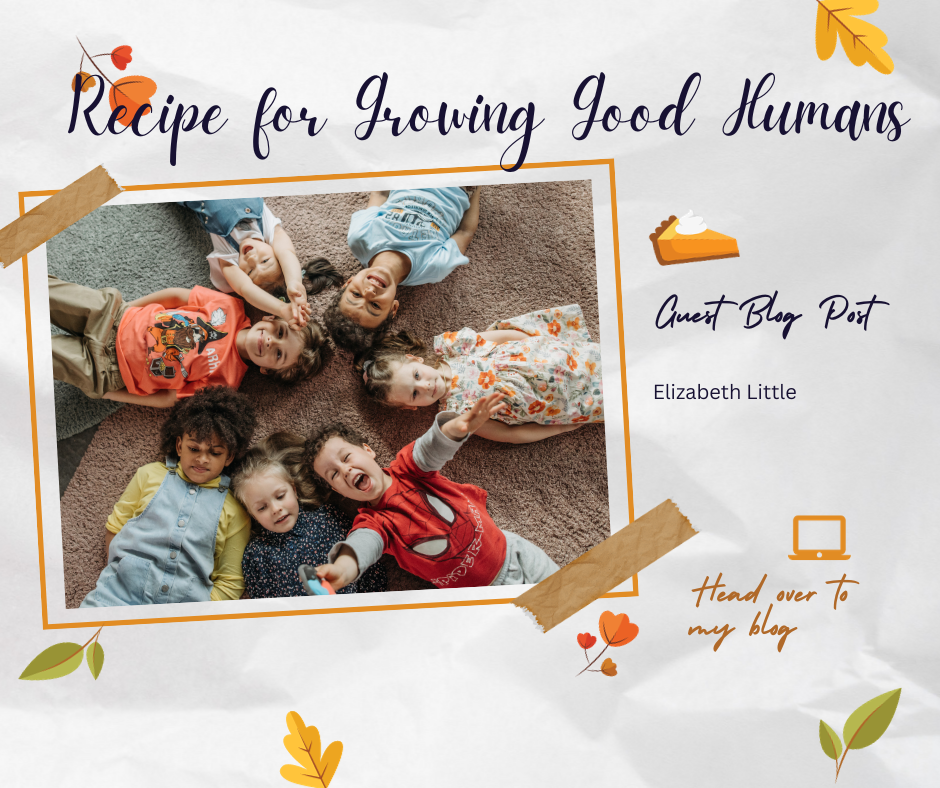
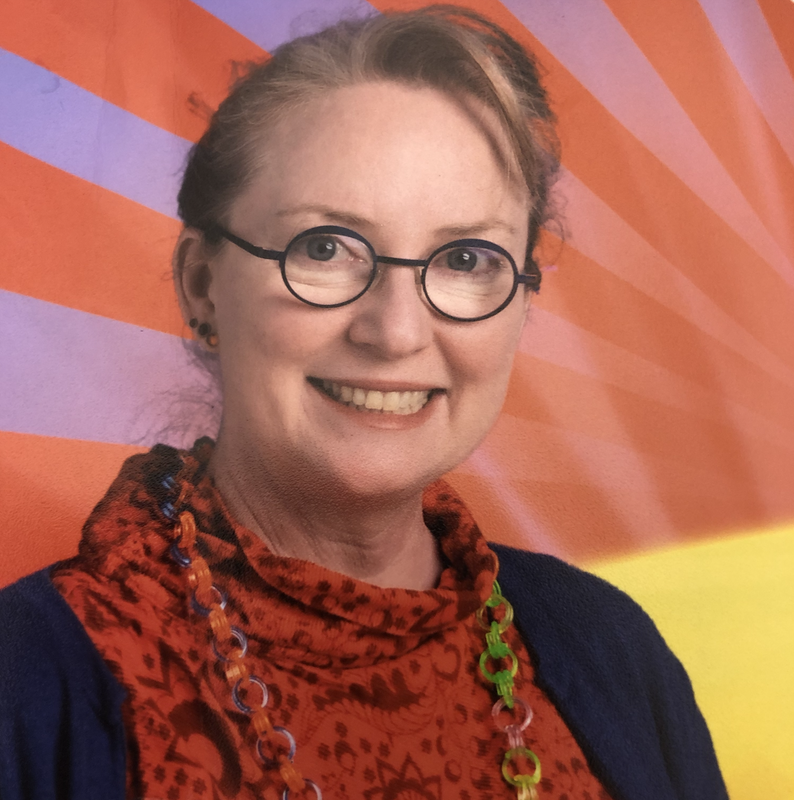
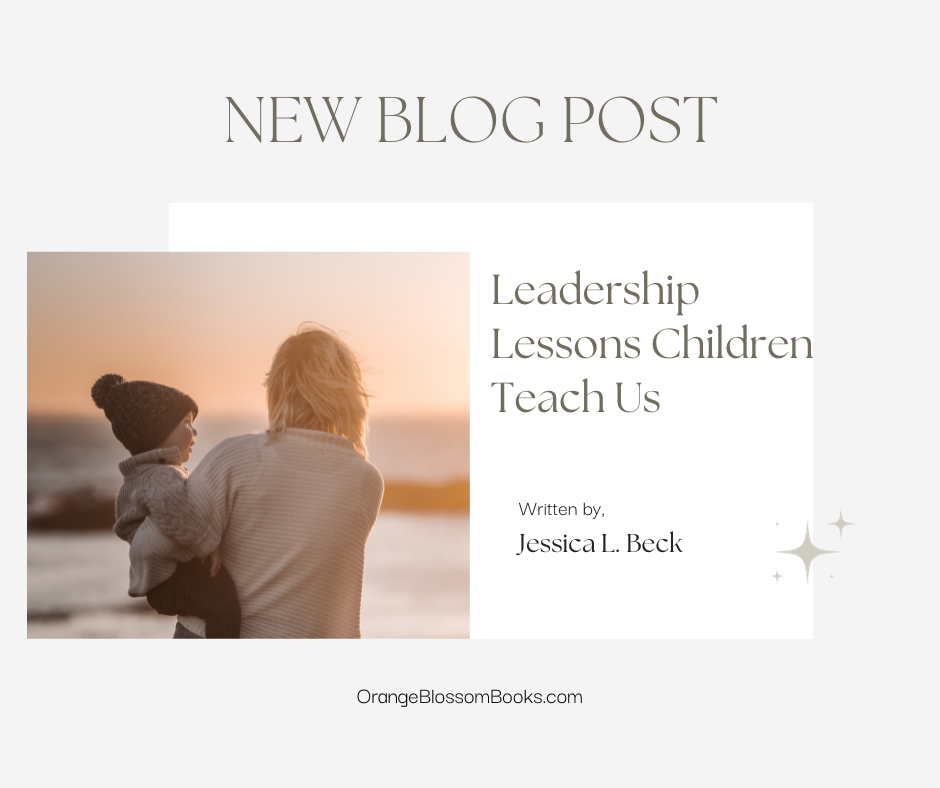

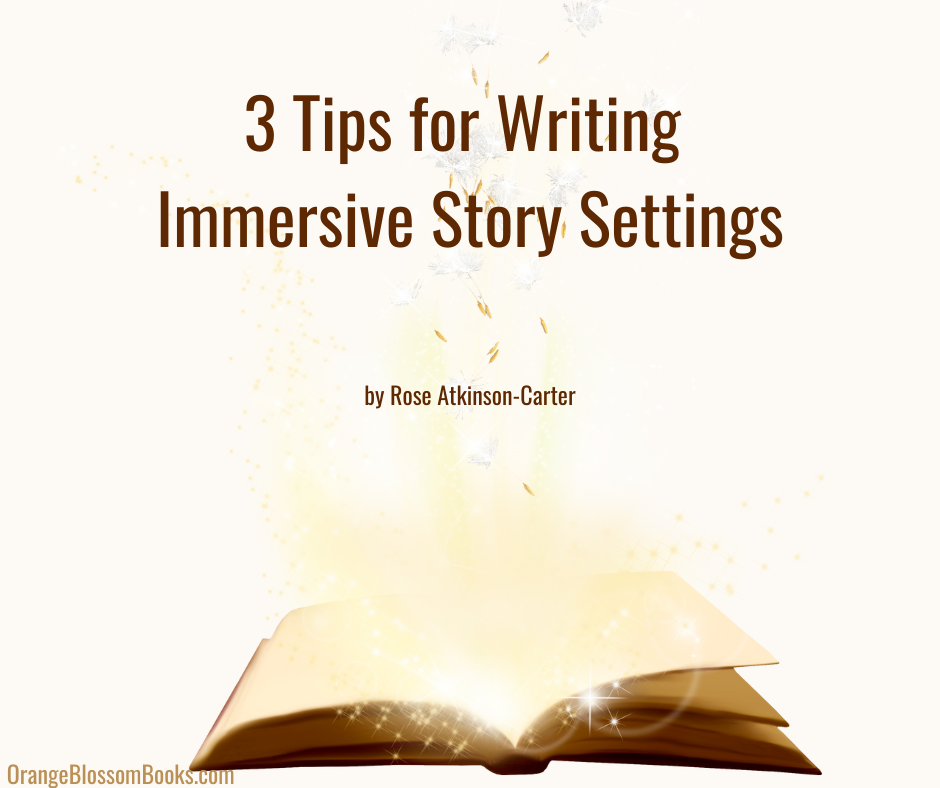
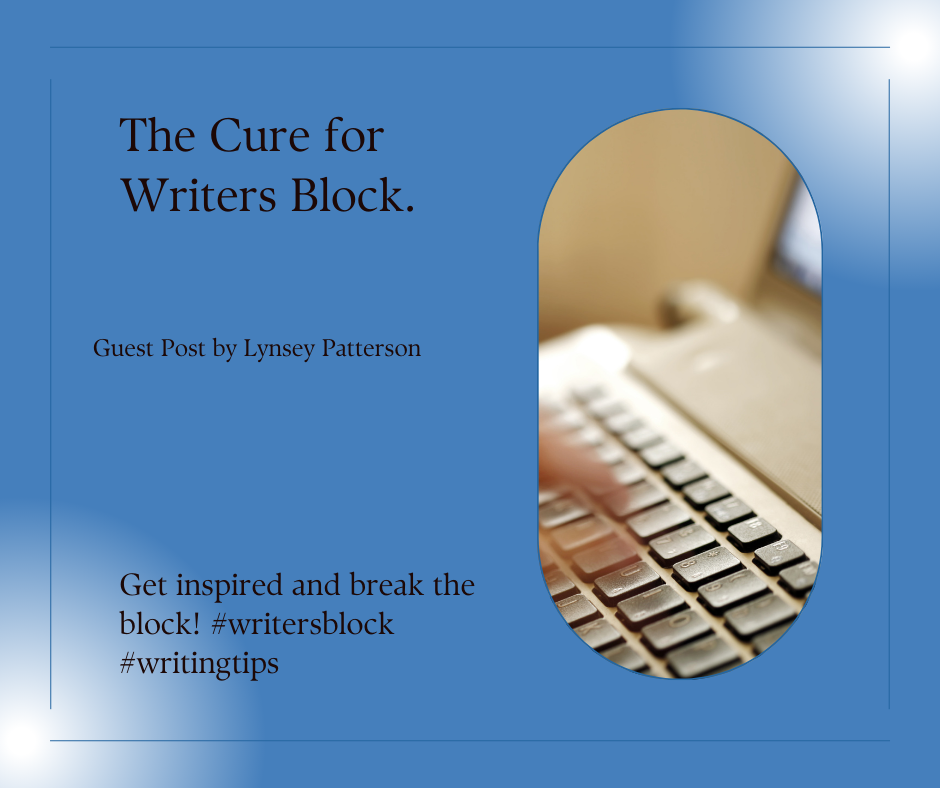

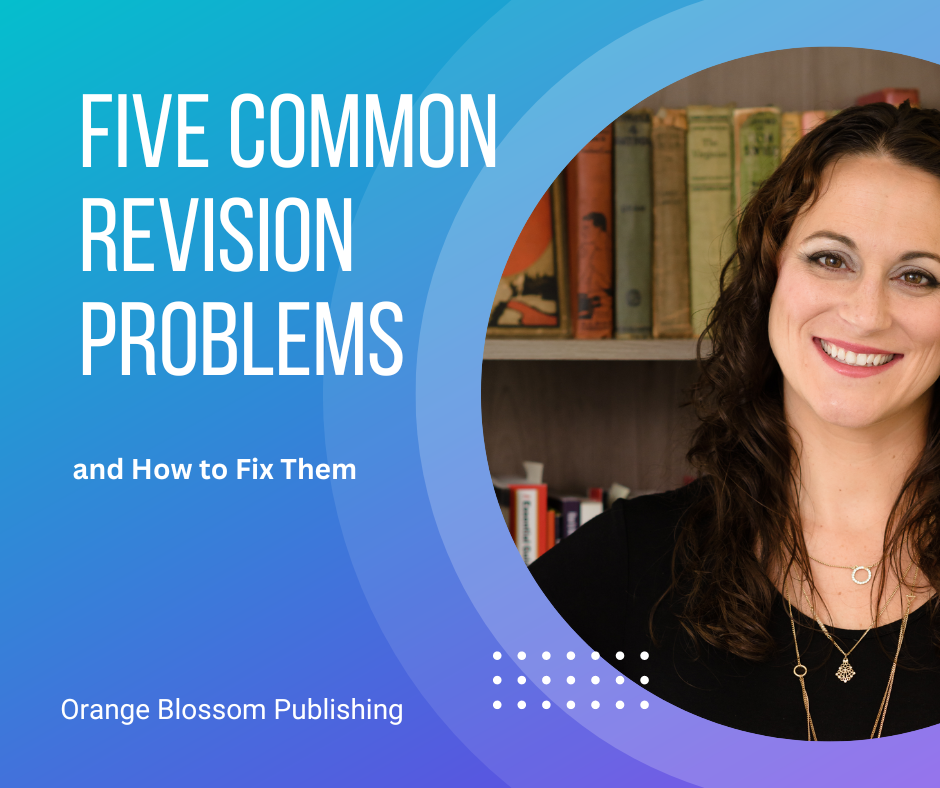

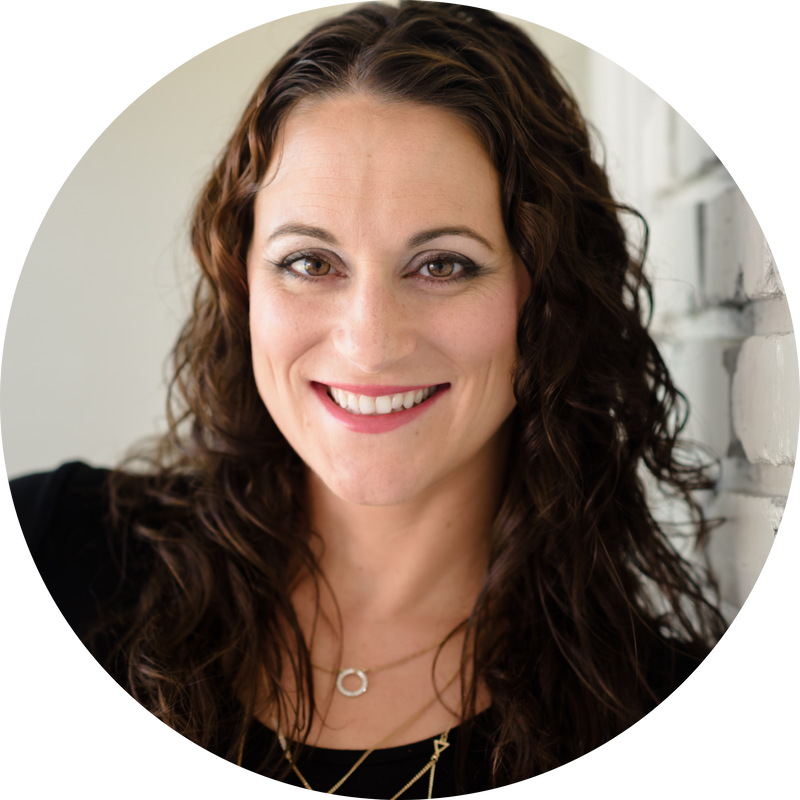
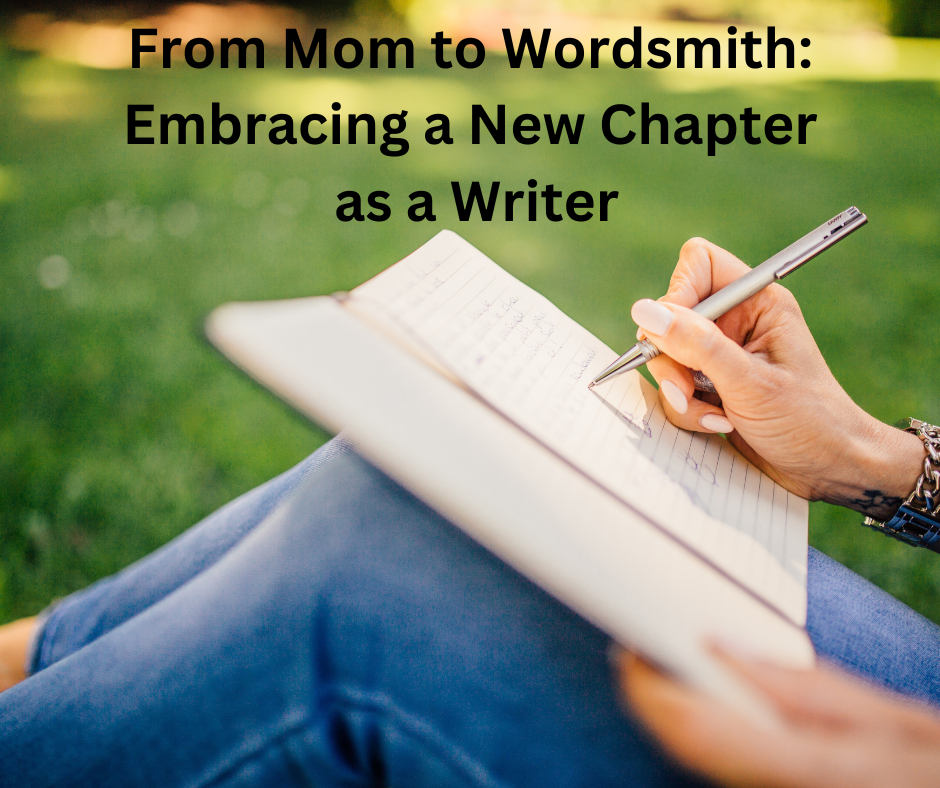


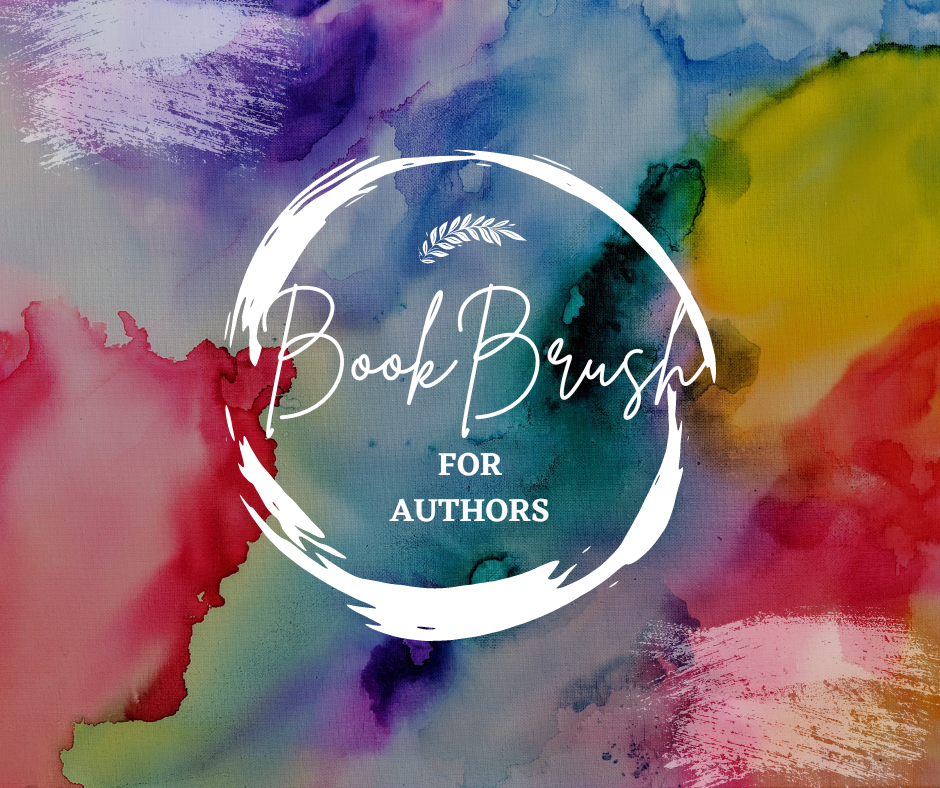
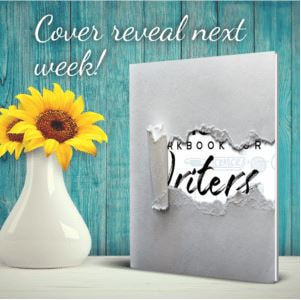
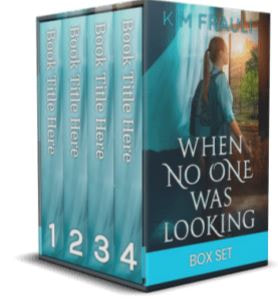
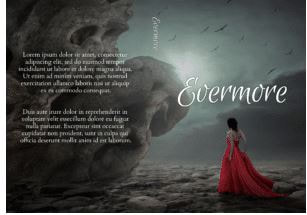

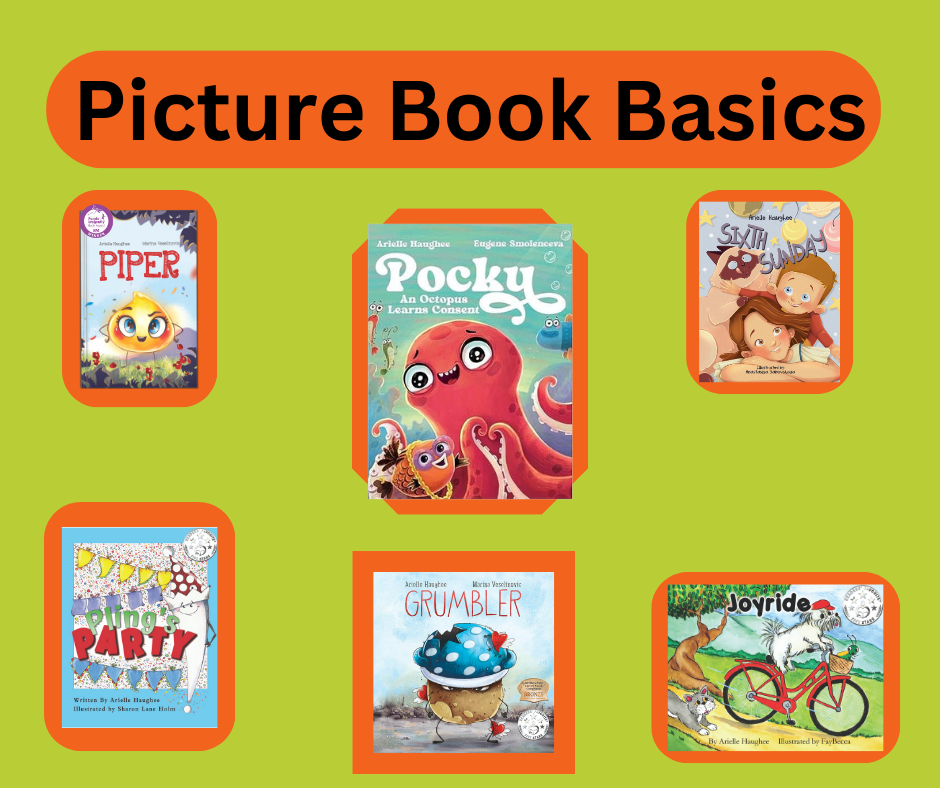
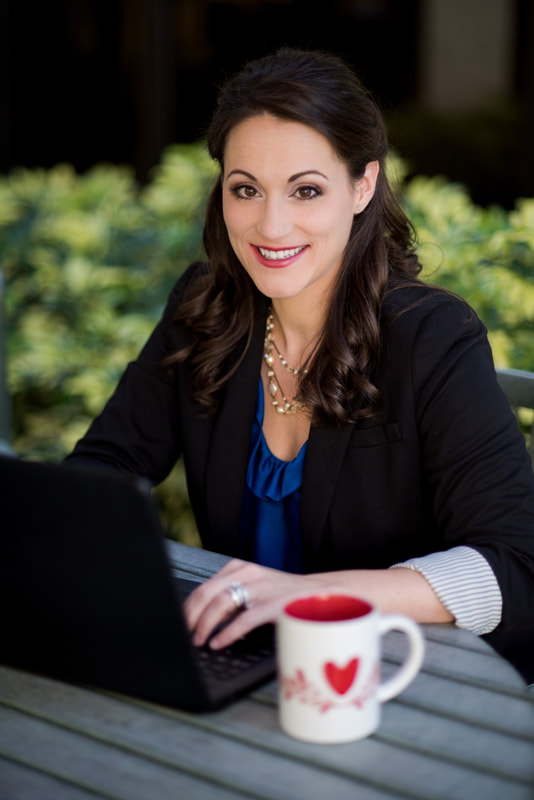
 RSS Feed
RSS Feed